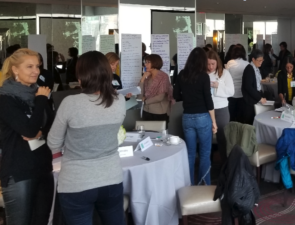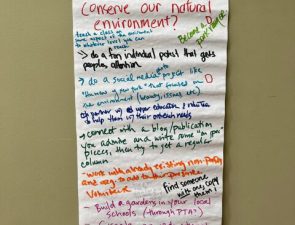As vaccination rates rose, many employers thought that the dust would settle, and we would return to some form of normalcy. Instead, shifting employee preferences have disrupted the status quo and left employers scrambling to recruit and retain top talent.
By Susan Burnett
As companies issue their return-to-work policies, employees are resisting. Earlier this summer, Apple employees pushed back on their CEO’s mandate to return to the office Mondays, Tuesdays, and Thursdays. An email supported by over 80 employees stated “… that Apple’s remote/location-flexible work policy, and the communication around it, have already forced some of our colleagues to quit. Without the inclusivity that flexibility brings, many of us feel we have to choose between either a combination of our families, our wellbeing, and being empowered to do our best work, or being a part of Apple.” This is a company that just reported a 54% year-over-year revenue increase – a record for the March period – all while employees worked remotely.
The Great Resignation
Apple’s employees aren’t alone. According to LinkedIn, 40% of today’s employees are considering resigning from their jobs – a wake-up call for company leaders and their HR teams. Women are especially prone to leaving their jobs to take care of increased workloads at home. McKinsey’s Women in the Workplace 2020 study warned that one in four women are contemplating leaving the workforce, which would undo decades of progress toward gender diversity in the workforce. Economists have referred to this trend as The Great Resignation, a mass exodus from one’s employer or the workforce entirely.
The imperative for business is clear. Companies must design new ways to attract, engage and retain their most valuable asset – the people that power their business.
One size fits one
Employees also face serious challenges at home and continue struggling to balance competing work-life demands and maintain their mental health. No home office? Oh well, let’s try the kitchen. No childcare? We take turns caring for our kids and survive workdays that extend into the evening. No schools for kids? We’re homeschooling while working. Living alone in an expensive apartment close to the office? We’re feeling stressed, burnt out, lonely and financially strapped.
The pandemic gave rise to important questions like, “Why do I work,” “What does success mean to me,” “How can I find balance in my life,” and “What’s my life’s purpose?” Employees found that their needs were not being met with traditional job designs and benefits. Surveys continue to show, today’s employees are less interested in a transactional relationship (money for work) and more interested in flexibility. In the minds of employees, wellbeing and happiness have become inextricably linked to their productivity and engagement.
How can you design your work life?
During the pandemic, Bill Burnett and Dave Evans published Designing Your Work Life. The sequel to the New York Times best-selling book, Designing Your Life, applies the design thinking process, tools and mindsets to help employees and their leaders design the workplace and jobs of the future. The book’s premise is that “YOU are designer of your life and your job, and with design thinking, you can make it much better. You can change how your boss reacts to you, change your experience of work altogether, and maybe even have an impact on your company’s culture.” Empowering employees with a design process and mindsets is the only way to achieve a one-size-fits-one culture.
However, empowering employees isn’t enough. They also speak to companies and managers, asking them to reimagine how they engage with their employees. LinkedIn’s CEO Ryan Roslansky gets it. His recent email to employees about how LinkedIn would operate going forward is all about trust. “We trust each other to do our best work where it works best for us and our teams. We’ve learned every individual and every team works differently, so we’re moving away from a one-size-fits-all policy.”
How to use design thinking to prevent your Great Resignation
1. Empathize: Listen to your employees every day, every week and every month using quick surveys, skip levels meetings, “All Hands” conversations, and one-one-ones. Get their feedback on what’s working, what’s not and what’s missing. Be authentic.
2. Define: Instead of managers and executives spending hours making decisions that impact employees’ engagement and productivity, involve employees in defining the problems that need to be solved today and engage them in designing the future workplace.This also works at an individual level, as our workshops with two financial service companies demonstrate. We helped employees use the design thinking process and mindsets to define the areas where they were stuck, ideate potential solutions, and leave with a prototype they were willing to try to get unstuck.
3. Ideate: Use idea boards or creative brainstorming in radical collaboration to generate many potential solutions to the problem you want to solve. Don’t fall into the trap of listing lots of ideas, taking a picture of the flipchart or post-its, and then just send the photo with the meeting minutes as if you are done. Instead, use agreed-upon and unique criteria to choose ideas worth exploring.
4. Prototype: Design a prototype that is easy to build, inexpensive and fast. These rough-cut solutions help you explore the solution’s viability.
For an individual, a prototype can be an informational interview with someone doing the job you may want to do, a temporary assignment that helps you try out a new role, a special project that builds new skills you seek or shadowing a leader to see if their daily work is a match for your work-life goals. For a company leader, a prototype may be piloting a new menu of benefits, trying out a new flexibility policy on employee focus groups, or building a new office and meeting space for the hybrid workplace.
5. Test: Testing and feedback are essential to user-centered design. Trying out the prototype on a subset of users to get their input is vital to get the solution right. Design thinking is about building your way forward; you learn, iterate, and improve your framing of the problem or solution.
During the pandemic, Lauren Jolda, a LinkedIn employee, and her husband decided to trade in their expensive Silicon Valley apartment for a home they could purchase in Marina, California, close to her parents. “My company supported me through every COVID challenge, sending me care packages to help me establish a workspace at home, giving me mental health days off when the pandemic seemed to stretch on forever, and supporting me to work remotely in ways that improved my productivity (e.g., no meeting Fridays). The fact that they are listening to employees and being flexible in how we return to work means the world to me. As long as I continue to grow and feel supported to work flexibly, I’ll never leave.”
The companies that win the war for great talent will be those who engage their leaders, HR teams and employees to use the design thinking process, tools and mindsets to design the workplace and jobs of the future. Providing flexibility and empowering employees to create new ways of working that meet their pressing needs will differentiate the best places to work today and in the future.
Interested in bringing designing your work life to your workplace?
Learn more at https://designingyour.life/bring-dyl-to-your-organization/.










